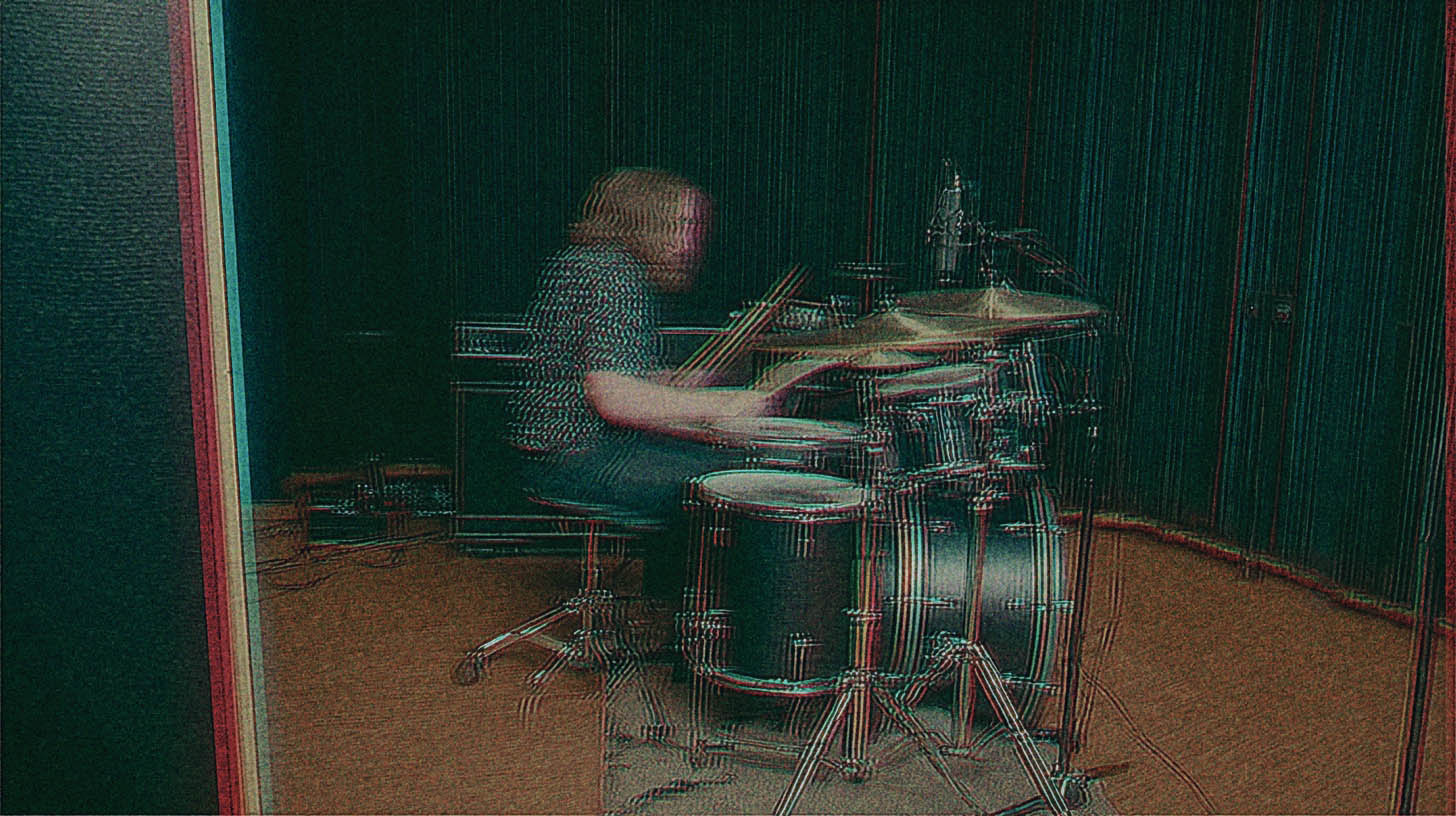
Mixing Gojira “Toxic Garbage Island” vocals w/ Logan Mader
Nail The Mix Staff
Gojira is synonymous with colossal riffs and Joe Duplantier’s earth-shattering vocals. That raw, powerful vocal sound is a signature part of their sonic assault. Ever wondered how it gets captured and then sculpted to sit perfectly in those dense, polyrhythmic mixes? We got a peek into the process with producer/mixer Logan Mader (Machine Head, Fear Factory, Once Human) as he broke down his approach to mixing Gojira’s vocals, specifically from their iconic track “Flying Whales.” Forget overly complex chains on every track; Logan’s method emphasizes smart bussing, carefully chosen plugins, and a feel for what the song needs. Let’s dive into how he tackles these monstrous vocals. If you want to see Logan mix the entire Gojira track from scratch, you can check it out on Nail The Mix.
Setting the Stage: Vocal Timing & Initial Setup
Before any plugins even get loaded, Logan has a clear idea of when vocals should enter the picture and how to organize them for maximum impact and efficient processing.
When to Bring in the Vocals
Logan confirms a common-sense but crucial step: get the instrumental foundation solid first. He aims to get the instrumental “nice and slamming” before bringing in the vocals. This ensures you’re making vocal mixing decisions in the context of a powerful backing track, not in isolation. Once the vocals are in, then it’s time to tweak everything to make it all gel.
The Power of Vocal Bussing: One Bus to Rule Them All?
For Gojira’s multi-layered vocal onslaught – featuring lead vocals, punctuated doubles, stereo-panned triples, and even big stacks of up to six vocal tracks including low, tonal screams – Logan prefers to route them all to a single auxiliary bus. Why?
- Cohesive Sound: Processing them together helps “glue” the different layers, making them sound like one unified, massive vocal performance.
- CPU Efficiency: Let’s be real, big sessions can tax your system. Bussing helps conserve precious CPU resources compared to loading identical plugin chains on numerous individual tracks. As Logan puts it, this approach is “CPU usage conservative.”
- Simplified Workflow: Adjusting the overall vocal character becomes much easier when the core processing is centralized. Especially when dealing with doubles that are essentially the same performance, this approach makes a lot of sense.
Logan Mader’s Gojira Vocal Plugin Chain: A Deep Dive
With the vocals routed, Logan builds a concise but powerful plugin chain on the main vocal bus. It’s all about enhancing what’s already there, thanks to a great source recording.
The Vocal Source: Shure SM7B Magic
The choice of microphone is fundamental. Logan reveals that Joe Duplantier recorded his vocals for this track using a Shure SM7B. This dynamic mic is a studio staple for aggressive vocals for good reason: it can handle high SPLs, has excellent rejection, and often requires less corrective EQ. “It doesn’t need a lot of EQing normally,” Logan comments, which is always a great starting point.
Serial Compression for Control and Character
Logan is a fan of “a lot of compression on vocals,” and he often achieves this using multiple compressors in series, each doing a little bit of work. This approach can provide more transparent control and add different tonal flavors. Find out more about how compression can shape your metal tracks on our Metal Compression Secrets: Beyond Just Making It Loud page.
First Pass: The Waves CLA-3A
First up on the bus is a compressor, and in this session, Logan reaches for the Waves CLA-3A. He’s aiming for around -3dB of gain reduction. He mentions that an initial compressor choice sounded a bit harsh on Joe’s vocals, highlighting the importance of listening and adjusting. With the CLA-3A, he mentions turning the “RVOs” off (which could refer to an analog noise/hum emulation or a specific control on the plugin) and focuses on making the compressor “work harder” to get the desired control.
Second Stage: “Spank Mode” Compression
Following the CLA-3A, Logan adds another stage of compression. While the specific plugin isn’t named, he mentions engaging its “spank mode” for a “little bit” more compression. This layered approach ensures the vocals stay upfront and consistent without sounding overly squashed.
EQing Gojira’s Roar: The “Tilt” Approach
With dynamics in check, it’s time for some tonal shaping. Logan employs a “tilt” EQ. This type of EQ, famously found in plugins like FabFilter Pro-Q (with its “Tilt Shift” feature), allows you to simultaneously boost one end of the frequency spectrum while attenuating the other, pivoting around a central frequency. “It can get really bright, but just turning it on makes it kind of bright,” he observes, using it to add presence without harshness. Smart EQ is crucial, and you can explore more strategies on our Carve Your Core: EQ Strategies for Mixing Modern Metal hub.
Taming Sibilance: The Essential De-Esser
Finally, to keep any harsh ‘s’ sounds or high-frequency bite from becoming overwhelming, especially after compression and brightening EQ, Logan adds a de-esser to the “backend” of his vocal bus chain. This is a critical step for ensuring the vocals cut through without being painful.
Crafting Space and Impact: Vocal Effects
Beyond the core processing, Logan uses effects to give the Gojira vocals their characteristic space and dimension.
The Go-To Delay: Waves H-Delay
For adding depth and rhythmic interest, Logan’s a big fan of the Waves H-Delay. He uses it as a stereo delay, but with a crucial tweak: filtering. “Filtered down so it’s pretty thin,” he explains, “filtered off the bottom and the top.” This helps the delay sit nicely in the mix without muddying the low end or adding excessive high-frequency clutter. For “Flying Whales,” which has a tempo around 130 BPM, he taps in a delay time (around 346ms), showing that sometimes a manually set, feel-based timing works just as well as strict tempo sync.
Adding Drama: Long Automated Delays
Beyond the always-on stereo delay, Logan also utilizes longer, more pronounced delays for specific sections or phrases. These aren’t just set and forget; they are often automated to “hit” particular words or moments, creating a sense of call-and-response or emphasizing lyrical impact. He demonstrates copying bus settings to quickly set up sends for these more dramatic delay throws.
Reverb: A Flexible Approach
Interestingly, Logan mentions having previously used a “big reverb” on the lead vocal but was reconsidering its use during this particular mix session. This is a great reminder that mixing is dynamic; what worked before might not be right for the current context, and it’s okay to experiment and remove elements if they’re not serving the song.
Why Bus Processing Reigns Supreme for Gojira’s Wall of Sound
Logan’s preference for vocal bus processing isn’t just about CPU savings; it’s a sonic choice that particularly suits Gojira’s dense vocal arrangements.
- Unified Power: When you have multiple layers, including doubles and triples of the same core performance, processing them through one chain ensures they all share the same sonic characteristics. This helps them blend seamlessly into a single, formidable vocal entity rather than sounding like a stack of disparate tracks.
- Consistency: The main lead, its doubles, and even textural screaming layers all benefit from the same foundational compression and EQ, creating a consistent vocal character throughout the song.
- Adaptability: While he centralizes processing for the main vocal group, Logan also shows flexibility by creating a second, similar bus for other distinct vocal elements later in the song. This allows for tailored processing if different sets of vocals (e.g., heavily layered backing choirs vs. a more upfront lead) require slightly different treatment.

100+ Insanely Detailed Mixing Tutorials
We leave absolutely nothing out, showing you every single step
Ready to Mix Like a Pro?
Logan Mader’s approach to Gojira’s vocals is a masterclass in achieving a massive, controlled, and characterful sound through smart bussing, targeted plugin choices, and a keen ear for what the song needs. Techniques like serial compression on a bus, the SM7B for raw capture, surgical EQ with tools like tilt EQs, and carefully filtered delays are all things you can experiment with in your own metal productions.
Gojira on Nail The Mix
Logan Mader mixes "Toxic Garbage Island" Get the SessionWant to see exactly how Logan Mader dials in these settings, makes critical decisions in real-time, and brings the entire Gojira track “Flying Whales” to life? With Nail The Mix, you don’t just read about it; you get the original multitracks and watch world-class producers like Logan mix iconic songs from scratch. It’s your chance to learn their complete workflow, plugin chains, and the thought process behind every move. Elevate your productions by learning from the best in the game. Check out the full Gojira mixing session with Logan Mader and explore how you can Unlock Your Sound: Mixing Modern Metal Beyond Presets.
Get a new set of multi-tracks every month from a world-class artist, a livestream with the producer who mixed it, 100+ tutorials, our exclusive plugins and more
Get Started for $1





